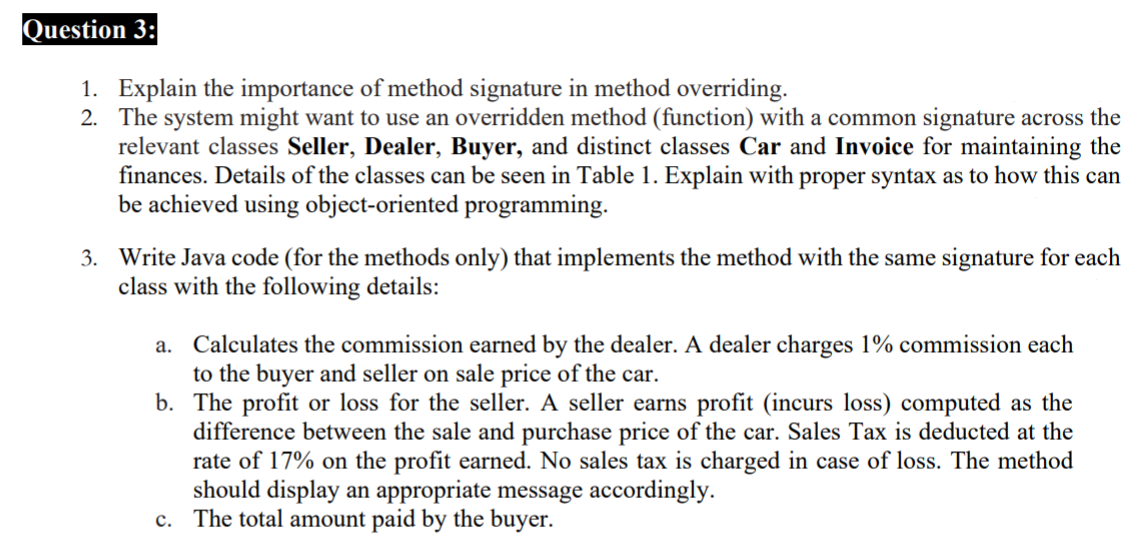Solve the written question not the image one Q3 attached in the image with the table 1 if you want to recreate code then you can Question Write code for an Invoice class for a car sale. Printing an object of the Invoice should print the details about the seller, the buyer, the dealer, the date of transaction, the car being sold, the purchase and selling price, the commission earned by the dealer, sales tax, and the total price of the car (calculated given the details in Question 3 part 3). A generation of the invoice object should set the isSold variable of the car class to true. You do not need to write code for any other classes
Solve the written question not the image one
Q3 attached in the image with the table 1 if you want to recreate code then you can
Question
Write code for an Invoice class for a car sale. Printing an object of the Invoice should print the
details about the seller, the buyer, the dealer, the date of transaction, the car being sold, the purchase and selling price, the commission earned by the dealer, sales tax, and the total price of the car (calculated given the details in Question 3 part 3). A generation of the invoice object should set the isSold variable of the car class to true. You do not need to write code for any other classes
Syntax of the Q3 code is given below:
import java.util.*;
class Car{ //class car
String[] name;
int reg_number,eng_number, chassis_num,status;
String[] city, model, color, date_reg,date_arr,type;
float price;
float abstract calculate (float price);
}
class Dealer extends Car{ //inherits from Car
String[] deal_name, deal_id, deal_add, deal_pno;
float dealer_com ;
float abstract calculate (float price)
{ dealer_com= 0.01*price + 0.01*price;
}
return dealer_com;
}
class person {
String[] name, address, p_no, email;
}
class Seller extends Car{ //inherits from Car
person p= new person();
float seller_price,sale_tax;
float profit;
float abstract calculate (float price)
{
if(purchase_price>sale_price)
{
profit= purchase_price-sale_price;
sale_tax=sale_tax-0.17*profit;
return profit;
}
else
return price;
}
}
class Buyer extends Car{ //inherits from Car
person p= new person();
float total_amount;
int f;
seller s= new seller();
float abstract calculate (float price)
{ f=s.calculate(price);
if(f==price)
return price;
else
retun price+f;
}
}
class Invoice{
public static void main(String[] args)
{
}
}


Step by step
Solved in 2 steps with 1 images









